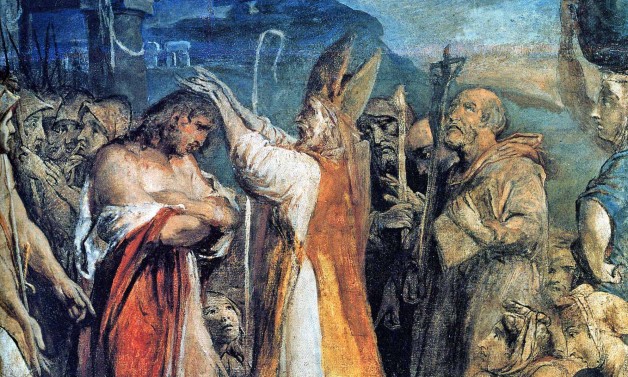“We always get a bump in calls around Paddy’s Day,” said Gillian Bird, the education officer at Dublin’s Society for the Prevention of Cruelty to animals, in an interview with Amy Chozick of the New York Times. The spring weather, heralded by the festivities of March 17th, lures reptiles and even snakes from their darkened hiding places. Hence the uptick in calls to various animal advocacies. But isn’t Ireland supposed to be snake-free? Irish legends tell us that St. Patrick himself banished all the snakes from Ireland. Yet—irony of ironies—according to a 2013 article St. Patrick’s Christian ‘isle has begun to slither again.’
During Ireland’s economic boom, many purchased exotic reptiles to keep as pets. When the country fell into a recession, however, the snakes, iguanas, and lizards were simply abandoned in Dublin flats or left on roadsides. One such rescued animal was a six-foot long boa constrictor. Another a crocodile. The image couldn’t be more striking: as the faith seems to be declining in a once-great Christian nation, its historic legends and most noble patron are inverted and attacked. Profession of the long-standing Irish religion wanes, and snakes, those deadly foreign invaders, begin to haunt her rolling hills.
In the ancient world, particularly in Scripture, snakes symbolize sin. Adam’s primordial sin in Eden famously results in his tempter’s punishment, “On your belly you shall crawl” (Gen 3:14). When the Israelites escaped from Egypt and crossed the desert wilderness, snakes were sent by the Lord God to punish their offenses (Num 21). In the New Testament, John the Baptist calls the Pharisees and Sadducees who harass him “a brood of vipers” (Mt 3:7), a phrase later echoed by Jesus himself (Mt 23:33). To crush the serpent (Ps 91:13) then is to stand above sin in the light and power of God. Often depictions of the Blessed Mother reveal her standing on a serpent as the New Eve, the precise fulfillment of Genesis 3.
St. Patrick’s purported banishment of snakes, then, stands symbolically as the triumph over ancient paganism in Ireland. In their total conversion to Christianity, the Celtic people of Érie even supported a strong tradition of monasticism which was a beacon to the rest of the world and almost single-handedly sustained learning through Europe’s so-called dark ages. To the Celtic monks of old—the heirs of Patrick the great missionary bishop—we owe countess innovations, including elements of our contemporary practice of private Confession.
Like the other nations of Europe today, Ireland’s turn away from the Christian faith is a highly complex affair, not able to be easily and comprehensively explained. Such an examination stretches well beyond this author’s ability and our purposes here. Our point is much simpler: if the present signs of the times attack the ancient patron, perhaps his life and teaching remain the answer to a people’s crisis.
First, we can emulate Patrick’s courage. After all, this is the saint who defiantly lit the bonfire of Easter on the Hill of Slane, against the wishes of the pagan High King. Because of this bold deed, the ancient legends tells us, Patrick was allowed to continue his preaching mission. As a young boy, during his escape from Ireland, Patrick refused to eat honey that had been offered to pagan idols (much like Paul’s own pastoral problem in 1 Cor 8). St. Patrick’s uncompromising integrity emboldens us to hold fast to our faith in the sticky moral situations of our own day. Finally, when a number of St. Patrick’s Christian converts were taken as slaves to Britain, the great founder of Irish Christianity wrote a moving letter defending the integrity of human life (assuredly recalling his own years as a slave) and calling the slave traders to repent and come to know the mercy of God and the Christian community. Patrick’s courage, integrity, and compassion took this light of Christ which Patrick lit on the Hill of Slane and ignited the hearts of the Irish people.
However, the most important thing about Patrick that should be said in our age is precisely the one thing that our confreres disdain to recall. St. Patrick preached Jesus Christ, and he baptized an entire nation in the Christian religion. He is the singular enemy of “co-exist.” Not all ways to happiness are equal; Christianity is the way to human fulfillment. St. Patrick gave to a pagan people the light and peace of Christ, and in so doing offered his entire life in service of the proclamation of the Truth.
✠
Image: James Barry, The Baptism of the King of Cashel by St. Patrick







